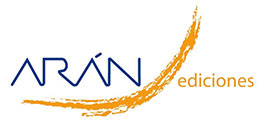Trabajo Original
Is there gender discrimination in full breastfeeding in Mexico?
Edgar Manuel Vásquez-Garibay, Elizabeth Guzmán-Mercado, Alfredo Larrosa-Haro, Nelly C. Muñoz-Esparza
 Número de descargas:
20415
Número de descargas:
20415
 Número de visitas:
7577
Número de visitas:
7577
 Citas:
0
Citas:
0
Compártelo:
Objective: differences have been shown between males and females in terms of the prevalence of malnutrition in different parts of the world, which point to discrimination against females, including with respect to full breastfeeding. Therefore, the objective was to show that exclusive breastfeeding is less common for females in a population of medium-low and low socioeconomic strata. Methods: this was a cross-sectional analysis of a sample of 170 mother-infant dyads according to type of feeding (74 full breastfeeding, 57 partial breastfeeding and 39 human milk substitutes) at the Nuevo Hospital Civil de Guadalajara. Dependent variables according to type of feeding: full breastfeeding (exclusive and/or predominant), partial breastfeeding, and human milk substitutes. Independent variables: demographic data, schooling, occupation of mothers and/or parents, and family income. Kruskal-Wallis, Mann-Whitney U and Chi-square tests and odds ratio were used. Results: the probability of full breastfeeding was 3.8 times lower in females than in males. In a non-significant way, the likelihood of full breastfeeding was lower than that of partial breastfeeding, and full breastfeeding was lower than the combination of partial breastfeeding and human milk substitutes in females. Full breastfeeding and partial breastfeeding were lower than human milk substitutes, and partial breastfeeding was lower than human milk substitutes in females. Conclusion: there is a differentiated character in the privilege of full breastfeeding; it is four times lower in females than in males.
Palabras Clave: Exclusive breastfeeding. Infants. Males. Females. Gender discrimination.
Artículos Relacionados:
Trabajo Original: Lactancia materna para control del dolor agudo en lactantes: ensayo clínico controlado, ciego simple
Jessie Nallely Zurita-Cruz , Rodolfo Rivas-ruiz , Virginia Gordillo-Álvarez , Miguel Ángel Villasís-Keever
Trabajo Original: Características maternas e infantiles asociadas a obesidad en lactantes menores de un año de edad del norte de méxico
Velia Margarita Cárdenas Villarreal , Rosario Edith Ortiz Félix , Ernesto Cortés-Castell , Patricia Edina Miranda Félix , Milton Carlos Guevara Valtier , María Mercedes Rizo-Baeza
Trabajo Original: Impact of a complementary feeding intervention and mother’s perceptions of child weight status in infants
Jessica Zaragoza-Cortes , Luis Eduardo Trejo Osti , Moisés Ocampo Torres
Carta Editor: Comentarios al artículo “Características maternas e infantiles asociadas a obesidad en lactantes menores de un año de edad del norte de México”
Valeria Isabel Juárez Méndez , Jorge L. Maguiña Quispe
Trabajo Original: Concentration of ghrelin and leptin in serum and human milk in nursing mothers according to the type of feeding
Alfredo Larrosa Haro , Edgar Manuel Vásquez-Garibay , Elizabeth Guzmán-Mercado , Nelly Carolina Muñoz-Esparza , Samuel García-Arellano , José Francisco Muñoz-Valle , Enrique Romero-Velarde
Trabajo Original: Feeding patterns and growth trajectories in breast-fed and formula-fed infants during the introduction of complementary food
Isabel Iguacel , Laura Monje , María Jesús Cabero , Luis A. Moreno Aznar , María Pilar Samper , María Rodríguez-Palmero , Montserrat Rivero , Gerardo Rodríguez
Trabajo Original: Real-world study in infants fed with an infant formula with two human milk oligosaccharides
Enriqueta Román , José Manuel Moreno Villares , Francisco Domínguez Ortega , Alfonso Carmona Martínez , Leandro Picó Sirvent , Luz Santana Sandoval , Jose Casas Rivero , Ayham Alshweki , Colin Cercamondi , Samir Dahbane , Maria Luisa Vidal Guevara
Trabajo Original: Vitamin D and its correlation with blood lipids and intima-media thickness in term infants
Ana Daniela Ortega-Ramírez , Alejandro Cabrera-Macedo , Mario del Toro-Equihua , Carmen Alicia Sánchez-Ramírez
Revisión: Revisión sistemática sobre la caries en niños y adolescentes con obesidad y/o sobrepeso
Trabajo Original: Composition of breast milk of lactating adolescents in function of time of lactation
Revisión: Potenciales intervenciones alimentarias en el manejo y prevención de la alergia en lactantes
Trabajo Original: Assessments of body composition and bone parameters of lactating rats treated with diet containing flaxseed meal (Linum usitatissinum) during post-weaning period
Trabajo Original: Exposición prenatal a drogas de abuso y crecimiento de lactantes de CONIN Valparaíso, Chile
Revisión: La patogenicidad de Cronobacter a la luz de la genómica bacteriana
Natalia Díaz Ortiz , Venancio Martínez Suárez , Sagrario Ortiz Jareño , Joaquín V. Martínez-Suárez
Trabajo Original: Validación del instrumento Infant Malnutrition and Feeding Checklist for Congenital Heart Disease, una herramienta para identificar riesgo de desnutrición y dificultades de alimentación en lactantes con cardiopatías congénitas
Martha Guevara-Cruz , Carlos Corona-Villalobos , Ana Laura Pardo-Gutiérrez , Judith Ileana Gris-Calvo , Beatriz A. Pinzón-Navarro , Jimena Fuentes-Servin , Salvador Ortiz-Gutiérrez , Azalia Avila-Nava , Alda D. García-Guzmán , Juan Gerardo Reyes-García , Isabel de Jesús Medina-Vera
Trabajo Original: Relationship between lipid profile, anthropometric indicators, and appetite-regulating hormones in infants according to type of feeding
Edgar Manuel Vásquez-Garibay , Alfredo Larrosa-Haro , Nelly Carolina Muñoz-Esparza , Enrique Romero-Velarde , Elizabeth Guzmán-Mercado , Samuel García-Arellano , Felipe Martínez Limón , José Francisco Muñoz-Valle
Revisión: The association of cadmium heavy metal with growth failure in children: A systematic review and meta-analysis
Chiqiong Liu , Gyung Park
Artículo Especial: XIV Lección Jesús Culebras. Dieta cetogénica, un tratamiento a medio descubrir
Consuelo Carmen Pedrón Giner
Trabajo Original: Percepción materna de las señales de hambre-saciedad y su impacto en la alimentación y el estado nutricional de los lactantes en México
Rosario Edith Ortiz Félix , Patricia Enedina Miranda Félix , Felix Gerardo Buichia Sombra , Liliana Estefanía Ramírez-Jaime , Milton Carlos Guevara Valtier , Velia Margarita Cárdenas-Villarreal
Artículos más populares
Revisión: Inteligencia artificial generativa ChatGPT en nutrición clínica: avances y desafíos
ChatGPT y otras herramientas de inteligencia artif...
Revisión: Suplementación con micronutrientes y sus beneficios: ¿por qué y cuándo?
Introducción: los micronutrientes participan en la...
-
Licencia creative commons: Open Access bajo la licencia Creative Commons 4.0 CC BY-NC-SA
https://creativecommons.org/licenses/by-nc-sa/4.0/legalcode




